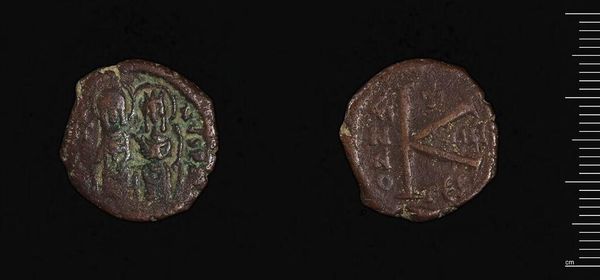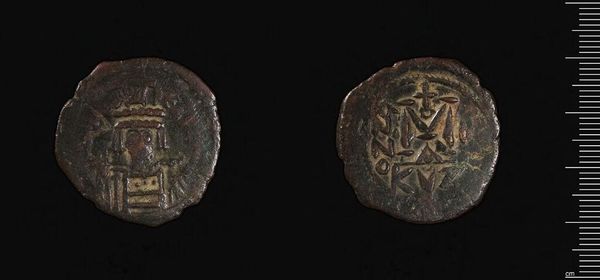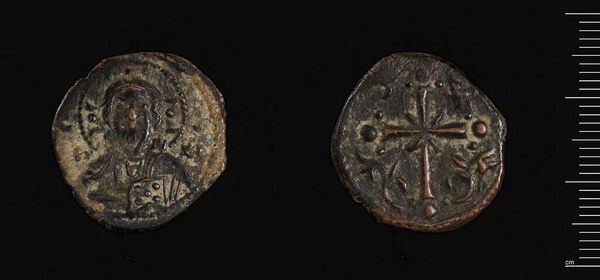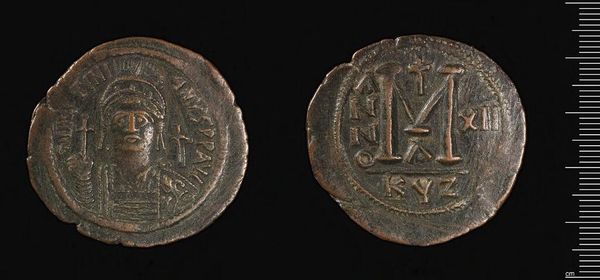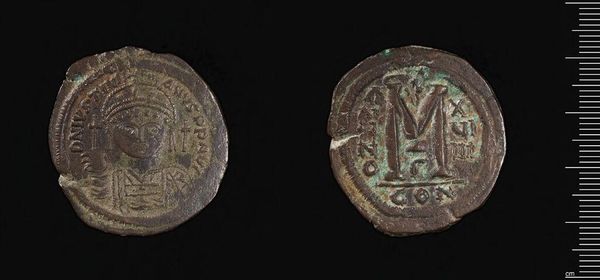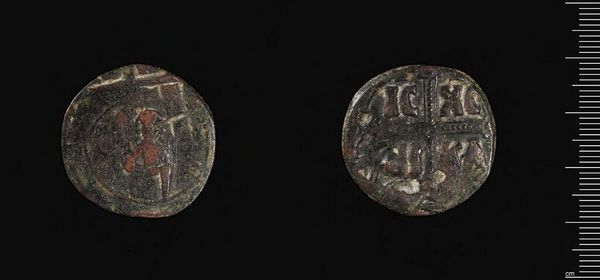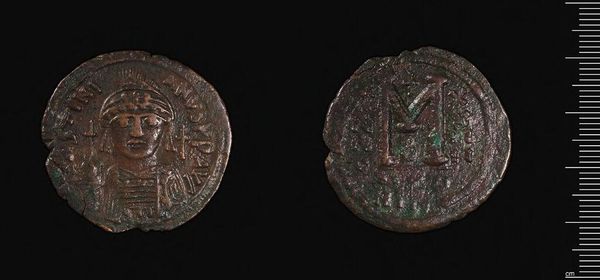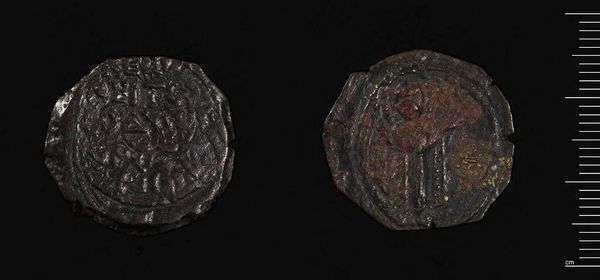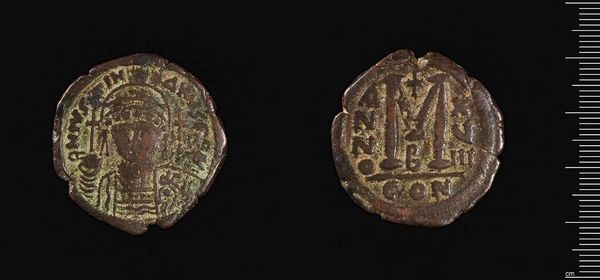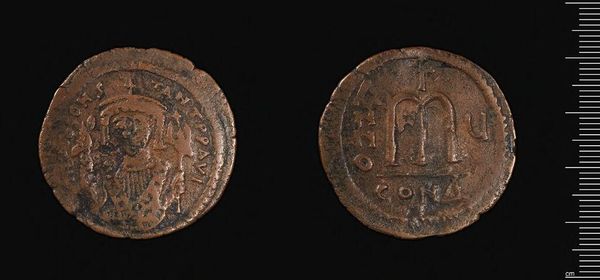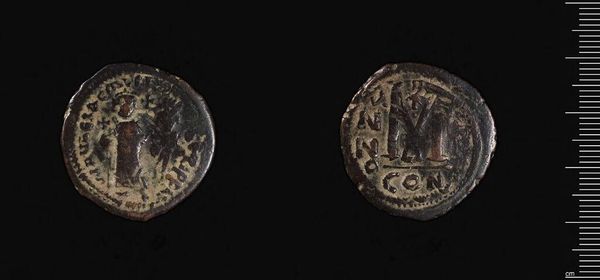
Coin of Maurice Tiberius c. 598 - 599
Dimensions: 5.45 g
Copyright: CC0 1.0
This coin, held at Harvard, bears the mark of Maurice Tiberius. Notice the circular form, its scale emphasizes the detail etched into the metal. The coin's design is bisected into two distinct faces, each presenting its own set of symbols. One side depicts a regal portrait, likely of Tiberius himself, encircled by text. The other face features a prominent Chi-Rho symbol—a combination of Greek letters representing Christ—flanked by additional markings. The choice of the Chi-Rho is not merely decorative. It functions as a signifier, embedding religious ideology within the economic and political structures of the Byzantine Empire. The coin, in this sense, becomes a site where power, faith, and economic exchange converge. Consider the coin’s circular format: this shape represents continuity and containment. The edge contains the power of the emperor, the faith of Christianity, and the flow of currency. Coins like these served as potent tools, embedding ideology within the very fabric of daily transactions.
Comments
No comments
Be the first to comment and join the conversation on the ultimate creative platform.
